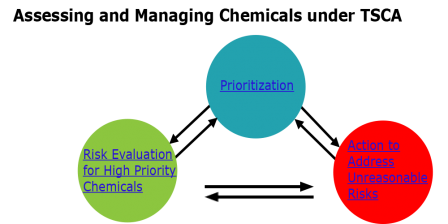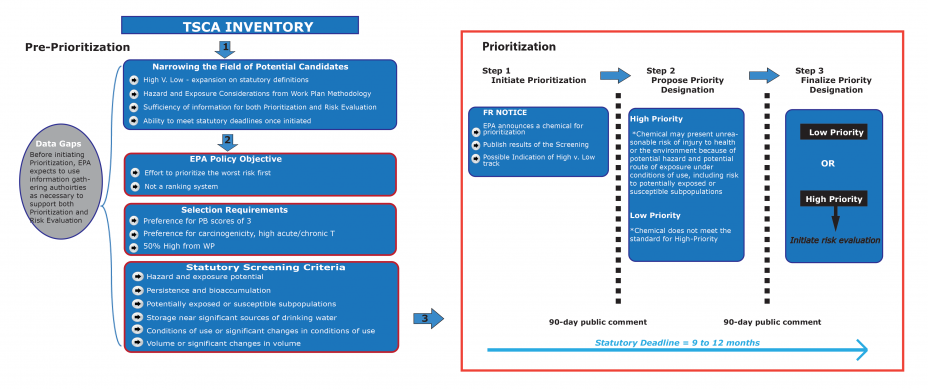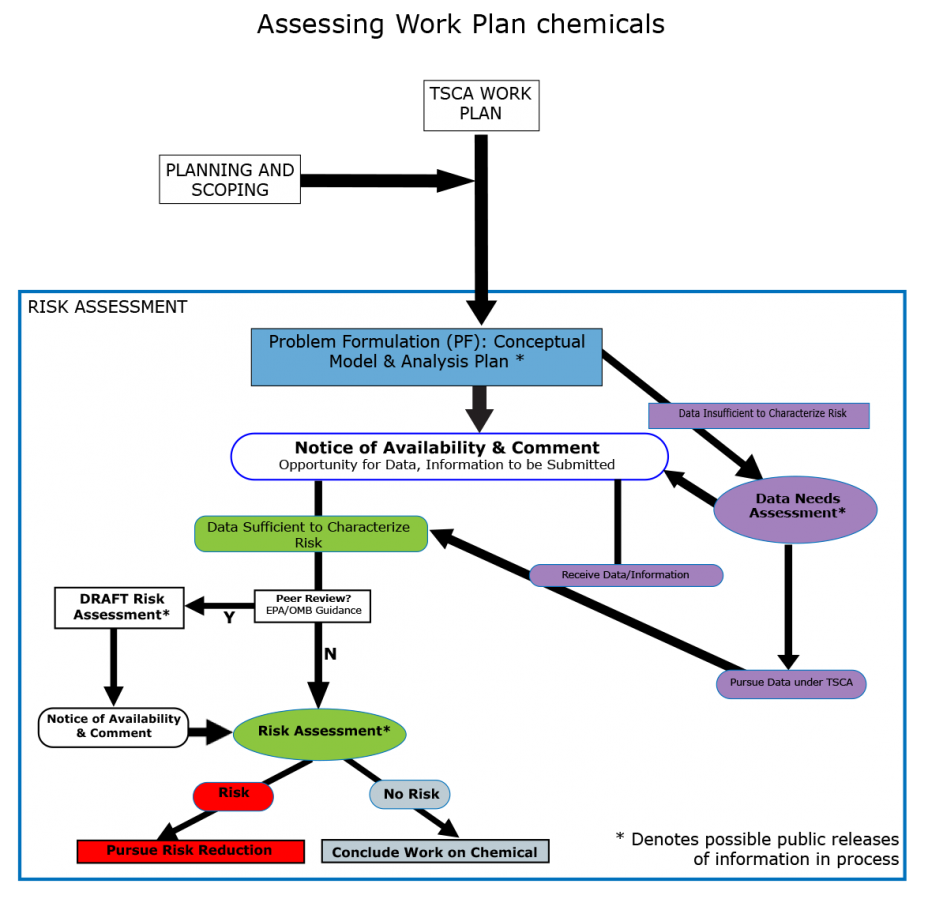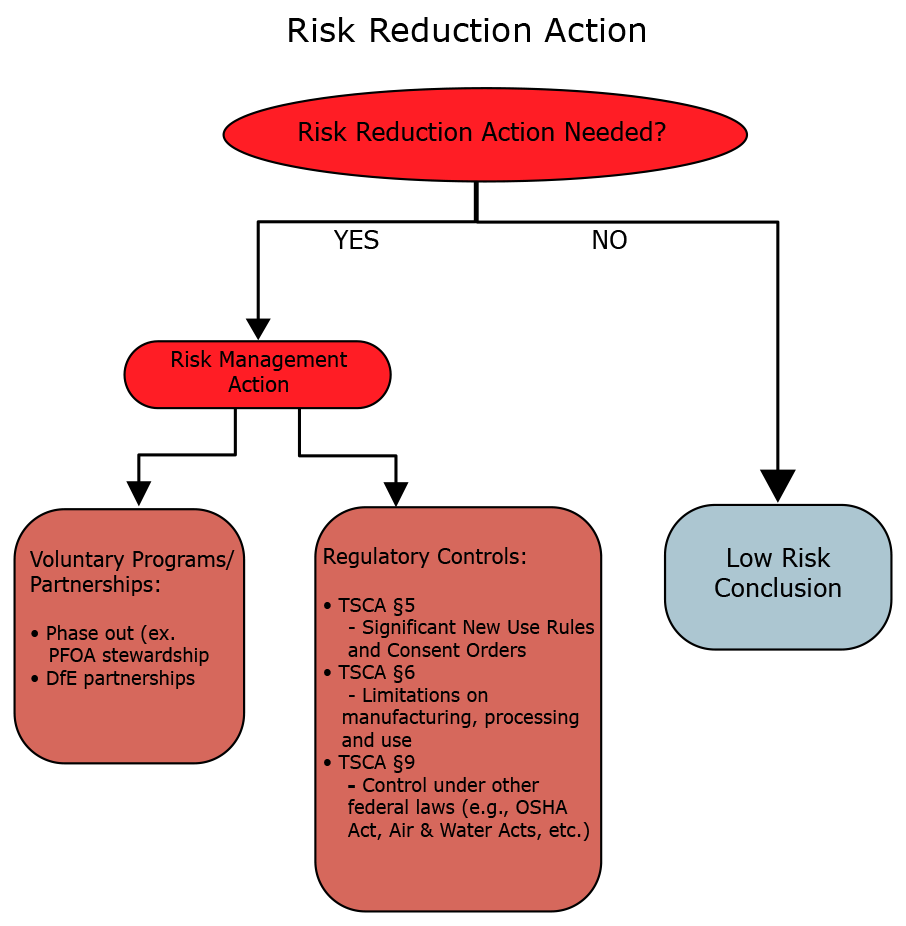How EPA Assesses Chemical Safety
Overview
EPA is using a multi-pronged strategy to ensure the safety of chemicals in commerce. TSCA requires that EPA promulgate a final rule within 1 year (June 22, 2017) to establish a risk-based screening process and criteria for designating chemical substances as either (1) High-Priority Substances or (2) Low-Priority Substances
EPA's four part strategy for addressing the process and criteria include:
- Steps and timeframes in the process (Initiate, Propose, Finalize)
- Definitions for High- and Low-Priority Substances
- Preferences for certain TSCA Work Plan chemicals
- Criteria against which chemicals must be screened (e.g., Hazard, Exposure, Persistence, Bioaccumulation, Toxicity, Cancer)
Prioritization triggers a series of deadlines associated with risk evaluation and risk management. TSCA does not significantly limit EPA's discretion in determining which chemicals to put into the prioritization process. Additionally, proposed rules fill gaps in the procedures and add considerations to help guide EPA decisions and convey our intentions to the public. Lastly, this starts a new pipeline for existing chemicals review and management. Deadlines in TSCA contemplate NO opportunity for pause all the way:
- Prioritization (9 to 12 months), to
- Risk Evaluation (3 to 3.5 years), to
- Risk Management (2 to ~4 years)
The following graphic provides an overview of the process EPA uses to assess and manage TSCA chemicals in commerce.
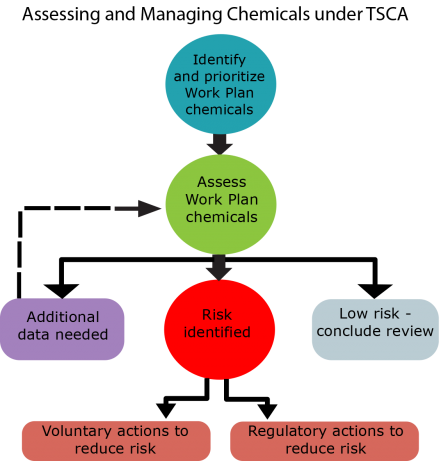
Process for Assessing Chemical Safety
EPA's process for assessing chemical safety consists of:
- Identifying Chemicals for Assessment
- There are more than 80,000 chemical substances on the TSCA Inventory of Chemical Substances.
- More than 8,700 of these chemical substances were reported as produced or imported into the U.S. in volumes of 25,000 pounds or more as part of the 2016 Chemical Data Reporting (CDR) effort.
- TSCA Work Plan. As part of its effort to prioritize chemicals for assessment, in 2012, EPA developed screening criteria to identify chemicals in commerce for further assessment and published the TSCA Work Plan. These criteria are based on a chemical’s combined hazard, exposure, and persistence and bioaccumulation characteristics.
- Learn about the TSCA Work Plan
- To view a graphic illustrating EPA's identification process, click the circle in the illustration below titled Identify and prioritize Work Plan chemicals.
- Assessing Risks from TSCA Chemicals
- Problem Formulation. As a first step in evaluating TSCA Work Plan chemicals, EPA performs problem formulation to determine if available data and current assessment approaches and tools will support the assessments. EPA supplements its Hazard Characterizations where necessary with other information available to the Agency. If problem formulation indicates risks are not likely, the Agency may conclude its work on the chemical.
- Data Needs Assessment. If problem formulation indicates that additional data are necessary in order to conduct a risk assessment, EPA will identify the data needs in a Data Needs Assessment. That data can be obtained by EPA through regulatory action under TSCA sections 4 and 8, or through voluntary partnerships with industry, such as the High Production Volume Challenge program or Enforceable Consent Agreements.
- Learn more about Data Development and Information Collection to Assess Risks.
- Risk Assessment. If problem formulation indicates the need to conduct a risk assessment, and there are enough data to do so, EPA will initiate a risk assessment which is the process to estimate the nature and probability of adverse health and environmental effects in humans and ecological receptors from chemical contaminants and other stressors that may be present in the environment. EPA will publish its peer reviewed assessments and they may be used to support risk reduction efforts.
- Learn more about EPA's assessments for TSCA Work Plan chemicals.
- To view a graphic illustrating EPA's assessment process, click the circle in the illustration below titled Assess Work Plan chemicals
- Reducing Risk from TSCA chemicals
- Risk Management Actions. If a risk from a particular use of a TSCA chemical is identified, EPA will take action to address the risks identified. Those actions may include regulatory actions, pursuant to TSCA section 5 and 6 or they may involve voluntary stewardship efforts.
- Learn more about EPA’s Current Chemical Risk Reduction Activities.
- Learn more about EPA’s Voluntary Stewardship Program for PFOA.
